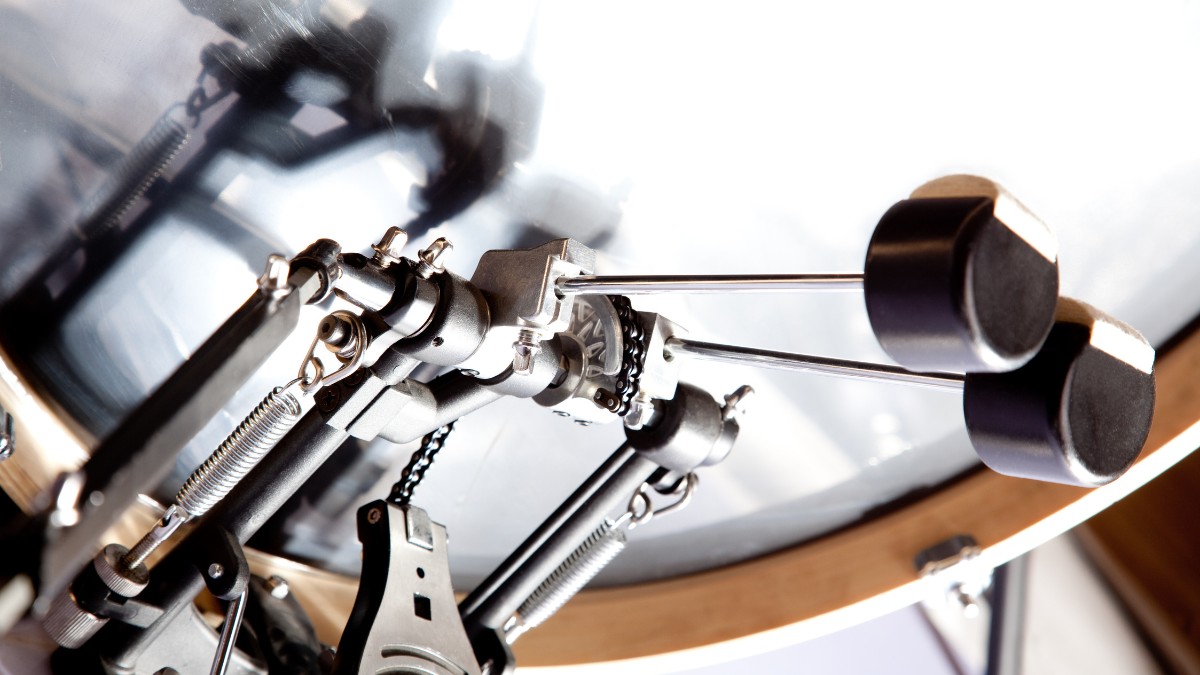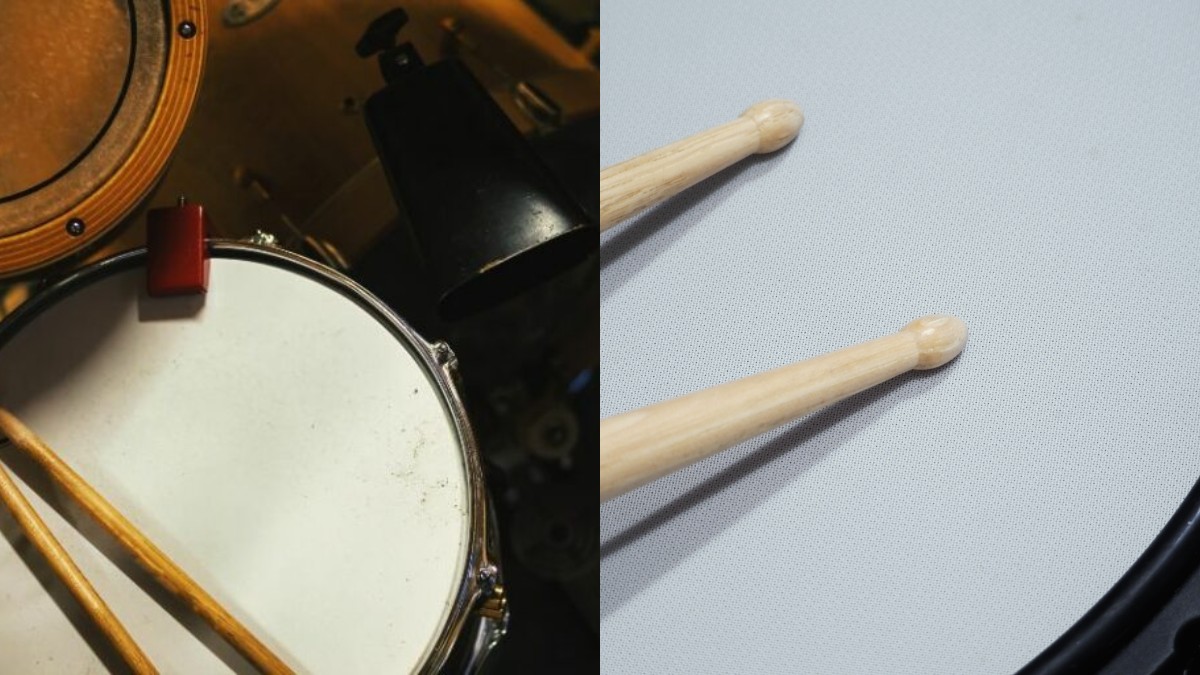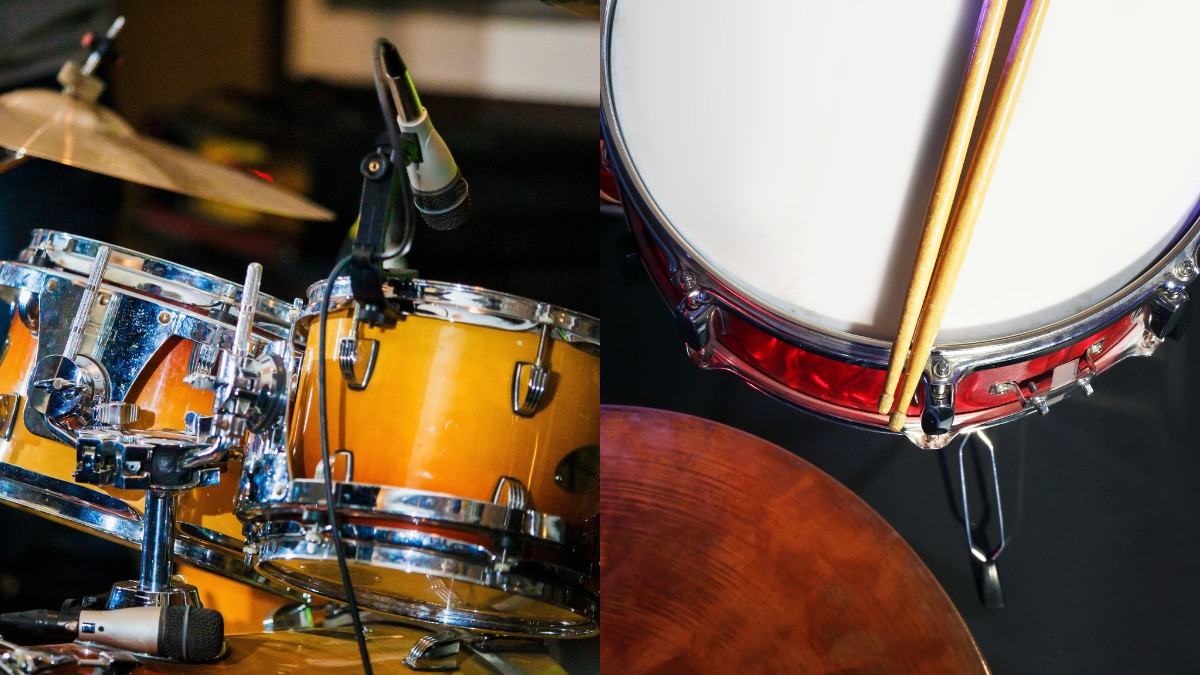10 Ways To Make Drums Quieter – Noise Reduction
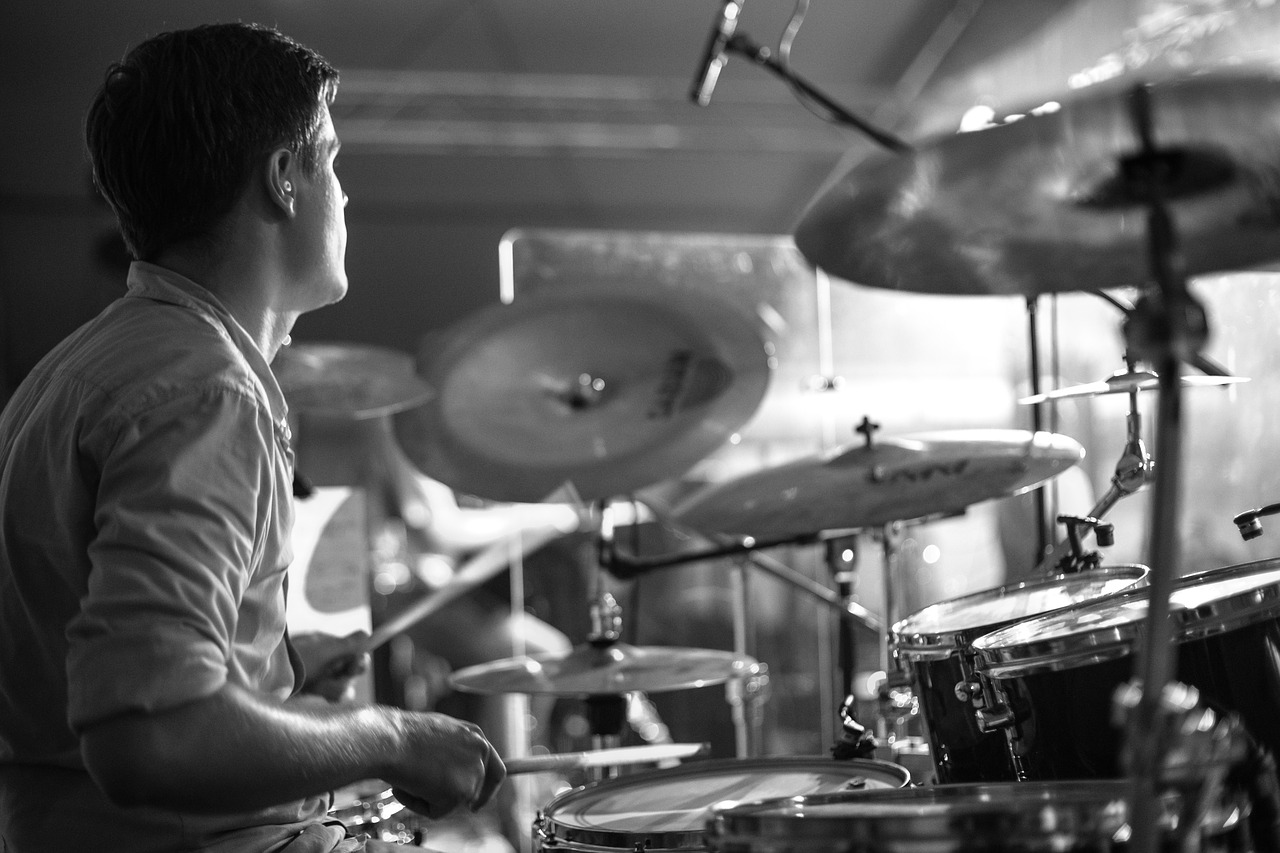
Drums are an incredible instrument and so much fun, but I bet your neighbors don’t think so! To many of them, it’s just tasteless noise that they can’t wait to put a stop to. Thankfully there are plenty of ways to make drums quieter.
Drums can be extremely loud especially if you’re playing heavier music. Other instruments have the advantage of being either naturally quiet or needing low effort to reduce volume. Drums, on the other hand, are quiet a challenge in this department!
There are plenty of expensive and inexpensive options to help you and everyone around you. Some are more time-consuming and some compromise the feel of the kit. Let’s dive in and explore each of them to see what might work best for you.
We’ll also talk about the practicalities of soundproofing a drum room, which is often the most sought after option for drummers.
Contents
1. Mesh Drum Heads
Mesh heads are a great way to quieten your acoustic drums while retaining the feel. They’re made of woven material and have pores that serve the sole purpose of producing little to no sound. The sound that you do hear is very weak vibrations bouncing off the drum shells.
The popularity of mesh heads has grown a lot recently giving you plenty of options to choose from. Remo, Evans and Aquarian all have mesh heads available. All of them are very easy to install, similar to how you would put on a regular drum head.
The only cons of mesh heads you may find are too much bounce and reduced musicality. If you have been practicing with mesh heads for a while, it might take you a moment to readjust to regular drum heads.
Also, if you use the same drum kit for gigging and practising, it can be a nuisance to have to change the heads frequently.
2. Low-Volume Cymbals
Low-Volume cymbals accompany mesh drum heads the best. They make up to eighty percent less sound than regular cymbals but feel just as real.
They are cheaper than cymbals and generally come in a pack of hi-hat, crash, and right, but you can also buy them individually. There aren’t too many options available but Zildjian and Sabian already produce great, durable low-volume cymbals, so you don’t have to look much further.
As with mesh heads, low-volume cymbals do compromise on the sound, but they feel a lot better to play on then electronic cymbals.
3. Use an Electronic Drum Set
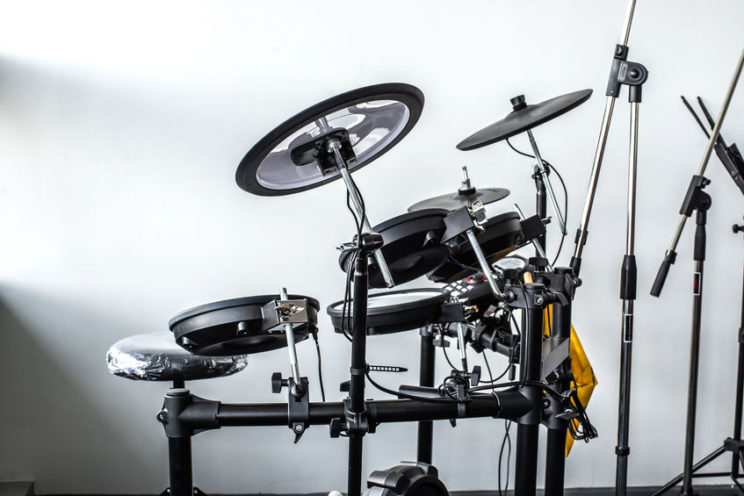
Electronic drums sets are a complete alternative to an acoustic kit. They’re basically pads which are designed and arranged like a real drum set where each pad has triggers that produced a sampled or modeled sound when you hit them. The noise produced is comparable to a practice pad.
The best thing about e-drums is that all you need to do is plug them into an outlet, put on a set of headphones, and get playing. They’re very easy to install and adjust ergonomically.
Separately to this, if they are MIDI-capable, they can be great for external recording and music production.
Do e-drums feel exactly like a real kit? No. Some of the lower-end kits also produce an inauthentic sound. Although, the higher-end kits these days are incredibly sophisticated, but you might have to shell out some money to buy a great electronic drum set.
4. Drum and Cymbal Mutes
Drum and cymbal mutes are thin rubber pads that you put on your drums and cymbals to dampen the loud sound. The biggest advantage of drum and cymbal mutes is that they are fairly inexpensive, very easy to install, and effective for what they are.
There are plenty of mute packs available in the market. These cover the snare, toms, bass drum, and cymbals.
Mutes also present the problem of a lack of feel and no tone. They can limit your dynamics on the real kit. With cymbal mutes, there have been instances where the rubber pads can leave residue on cymbals.
5. Bass Drum Muffling
The bass drum is the loudest component of your drum set. The vibrations from a hit reverberate through the cosmos. However, muffling is a simple trick you can use to dampen the resonance of a bass drum.
All you have to do is remove one drum head, stuff a pillow, and make sure that it is touching both ends of the shell. The pillow absorbs the impact of the bass hit and produces a more compact sound.
Muffling a bass drum is really cheap and takes very little effort. You don’t even compromise on the musicality as muffled bass drums are a standard in rock drumming.
In fact, bass drum muffling is one technique that many drummers use even when gigging or recording as it can control the overtones and shape the sound of the kick.
6. Towels and Blankets
If you have a tight budget that you need to spend on other accessories, you can go the primitive way of putting towels and blankets over the drums and old shirts over the cymbals. It’s a very no-expense DIY hack that can certainly reduce the noise from your kit to a certain degree.
Doing this takes little effort but the flip side is that it looks clumsy. Also, the rebound is poor with cloth material, so your technique might suffer and the drums still make a decent amount of sound which might not be enough for you.
That said, if you really want to cut down on noise, a big towel over your snare drum might be a good option! Just make sure to disengage the snares for the lowest possible volume!
7. practice drum kits
Practice drum kits are a great way to develop techniques and motions without making too much noise. They’re also affordable and require no effort to install.
These kits are practice pads, mounted on stands and arranged as an acoustic kit. They take little space and are portable so you can place them in a small corner of your house and practice as hard as you want.
Practice drum kits don’t include cymbals, so you will have to buy low-volume cymbals separately.
8. Quiet Drum Sticks (Drum Rutes, Hot Rods, Brushes)
If you don’t want to exchange the essence of the drums with low volume, it might be worth your time to check out non-traditional sticks like rute sticks, also known as hot rods and brushes.
Both of them are significantly quieter than a pair of drum sticks and are durable enough. They are widely used in jazz and smaller venues as they produce a more mellow sound. The techniques are also different so you will be expanding your musical vocabulary with these in your hands.
While hot rods and brushes are an excellent alternative to drum sticks, they do require some effort to learn if you aren’t used to them. This is particularly true for brushes. They’re also not suitable if you primarily play faster music as neither of them offers much rebound.
9. Room Soundproofing
Soundproofing is the ultimate way of not being a nuisance as a drummer. However, it’s very difficult to adequately soundproof a drum room unless you have a large budget, as the noise levels and vibrations coming from the room can be very high. Also, many living situations such as apartment living or rented accommodation make either near impossible or impractical to properly soundproof your space.
Keep in mind that there is a big difference between soundproofing and acoustic treatment. Soundproofing is all about reducing noise escaping from your drum room, whereas acoustic treatment is used in studios to improve the sound of the room for recording (the latter uses bass traps, acoustic sound panels, and other techniques, which we’re not really interested in here if we just want to reduce noise).
Some of the easiest ways you can soundproof your room are by installing generous amounts of acoustic foam to the ceiling and walls, soundproof flooring, ensuring minimal sound leakage from windows and door cracks. You can also buy soundproof curtains and drum rugs to minimize the sound escaping from your room. You need to apply generous amounts of these materials in the correct fashion in order to properly soundproof a room. Also, a drum shield can also coming in handy.
Lastly, if you have a significant budget and willingness to start a new project, along with having the space and required planning permission for it, you can build a complete home studio, using the ‘room with a room’ method to maximise soundproofing! Nothing beats a home studio in keeping the noise of drums within your room. All the extra effort is incomparable to the drumming experience in a well soundproofed room.
10. Practice Your Dynamics
If nothing else works for you, then work on your dynamics. A good drummer has control over their playing, loud or quiet. Therefore, you can use the barrier of picky neighbors as an opportunity to learn and play drums quietly!
The results may not be similar to other options but at least you will improve as a drummer. Add to that, you might keep complaints at bay.
This might be a big task if you are a beginner drummer as you might not have great control. Practicing quietly can also limit your maximum tempo, but you can always use a practice pad for that.
Summary
There are plenty of creative ways to make your drum set quieter. Some methods use items that you can find around the house, whereas others might require some new bits of gear from your music store or soundproofing materials supplier.
The most important thing is to stay pragmatic and try to find the best suitable practice setup that you can with the resources available to you. Remember, if all else fails, get your practice pad out and work on your rudiments!
I spent many years practising drums using simple drum and cymbal mutes on my beginner drum set and by heavily muffling all other items of the drum set. That said, you can’t make a drum set completely silent, but you can make drums a lot quieter when you need to.








